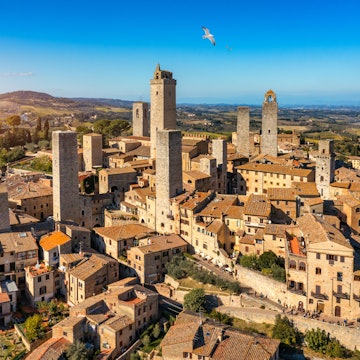
10 of the best places to visit on the Amalfi Coast



You can pause and admire the beauty of Fiordo di Furore. SimonSkafar/Getty Images
The Amalfi Coast is on too many bucket lists for its own good, with travelers coming in droves for its heady mix of pastel villages, glinting majolica domes, lemon groves, terraced vineyards, all edged by kingfisher-blue Tyrrhenian Sea.
This 50km (31 mile) stretch of southern Italian splendor runs from Punta Campanella to Salerno. Crowds can be overwhelming, with the coast busy from Easter till October, but even in the tourist honeypots, you can usually find quieter corners.
Following are some outstanding highlights of one of Italy’s most beautiful places, including the savviest ways to see them and the best ways to get off the beaten track.

1. Positano
Best for coastal chic
With lemon- and mandarin-colored houses clinging to wooded hills like an amphitheater, Positano’s beauty has seen it turn from humble fishing village to the playground of the international glitterati. It’s arguably at its very best viewed from the water by boat, but if you moor up and climb the many steps you’ll pass designer boutiques, plus restaurant terraces cloaked in bougainvilleas, before being rewarded by soaring coastal panoramas at the town's summit. Stop for an aperitivo on the terrace of the historic hotel Le Sirenuse and gaze down at the Gulf of Naples with a Negroni in hand.
Planning tip: Accommodation prices are high, with room rates hovering from around the €260 (US$300) mark, with many more over €1000 (US$1160) a night, so unless you’re feeling flush, it’s not an ideal base.

2. The Path of the Gods
Best for walking
The Path of the Gods – il sentiero degli dei – is a 7km (4.34 mile) stretch of mule path through rosemary-perfumed Mediterranean shrubland, a staggering 630m (2065 ft) above sea level, seemingly suspended between the clouds and the earth. It’s so-named as it was said to have been cut into the earth by the gods stampeding down from heaven to save Ulysses from the sirens' song, but it feels like it could refer to the views, which are simply heavenly.
The medium-difficulty trail has several entry and end points, but the best approach is to start in the mountain village of Agerola (Bomerano) and end in Nocelle with a refreshing lemon slushie from the granita stand, Lemon Point, before hiking the 1700 stone steps down to Positano (alternatively, avoid the steps and walk back to Bomerano).
Planning tip: Hit this in spring or autumn/fall or start out as early as possible during summer and winter months to beat the heat/other walkers or maximize daylight. Trail shoes are a must.
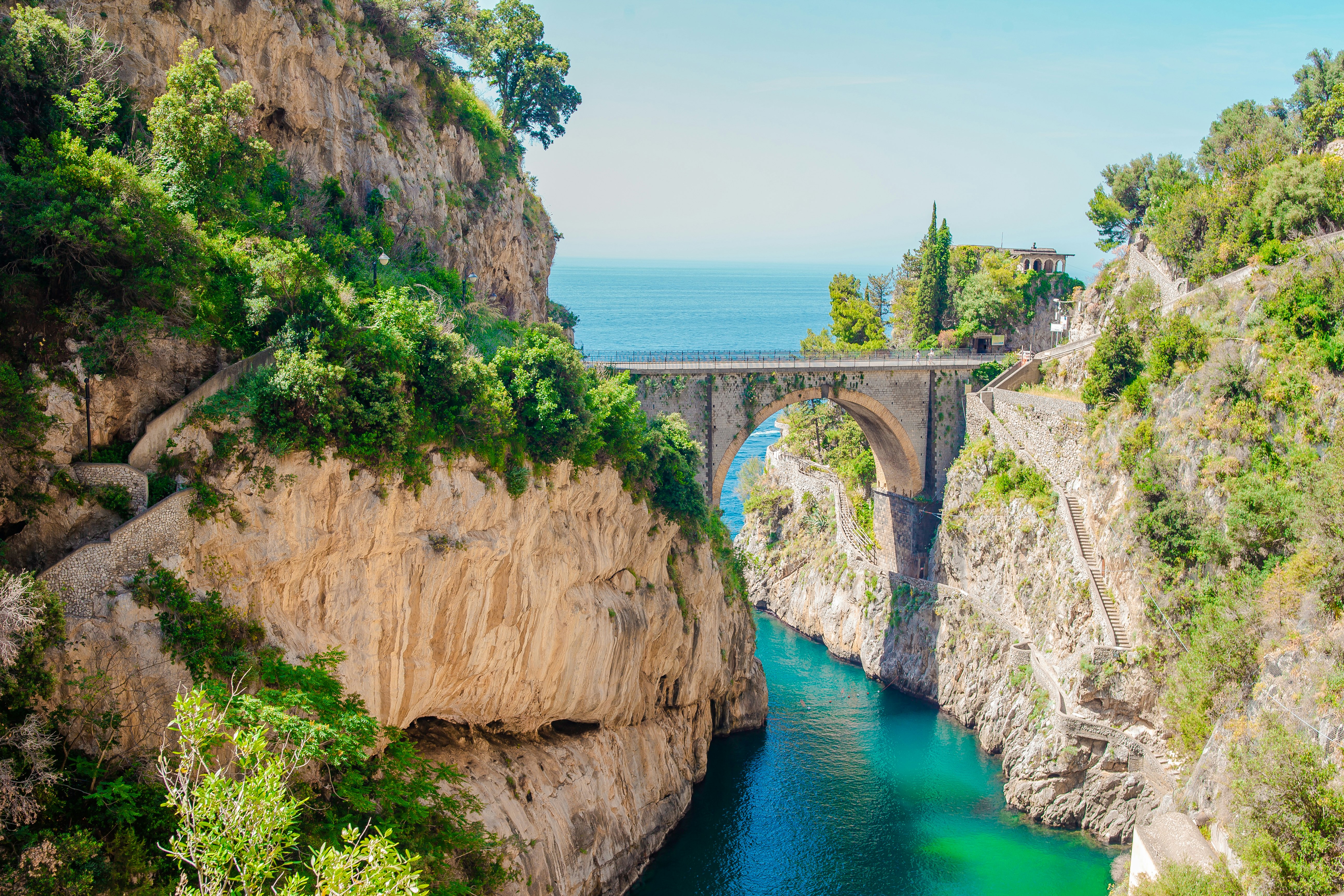
3. Furore Fjord
Best for dramatic scenery
Pedants note, the "fjord" in Fiordo di Furore, is not strictly accurate: fjords are formed by glaciers, whereas this craggy inlet was carved into the cliffs by the Schiato stream. Descend hundreds of stone steps and you’ll be rewarded by a tiny beach between sheer cliffs that are linked by a soaring arched bridge. Head east on the SS163 state road by car or 5070 SITA bus to the hamlet of Furore, where you'll find the staircase leading to the beach just outside the Marisa Cuomo Winery. Your reward is a small and pebbly yet perfect beach, lapped by sea as clear as glass.
Planning tip: You can swerve the steps by arriving directly by boat or water taxi.

4. Amalfi
Best for medieval architecture
Amalfi is the town that gives the coast its name, the former head of a medieval Maritime Republic, with splendid architecture that dates to its medieval boomtime. Its apex is the Piazza Duomo, where a dramatic 62-step staircase leading up to the 12th-century Cattedrale di Sant'Andrea and reliquary. Don’t miss the square’s historic pastry shop Pasticceria Pansa.
Amalfi is not only the epicenter of the coast’s lemon cultivation, but has produced artisanal paper since the middle ages. Stroll down Via Lorenzo D'Amalfi – the main drag – to the edge of town, and you can take a deep dive into this productive heritage, with Amalfi's Museo della Carta (Paper Museum), housed in an original 13th-century paper press. Nearby is the Amalfi Lemon Experience, lemon groves run by the same family for six generations: have a tour, take a cooking class, have a meal, or sample their house limoncello.
Planning tip: If you can, time your visit for May, June, September or early October, when the weather is still usually fantastic and the town will be less crowded.

5. Ravello
Best for villas and views
Ravello has a soaring perch above the coast, with rose-pink medieval villas draped in vines and bougainvilleas, and views where forget-me-not sea merges with periwinkle sky. It’s 5.7km (3.5 miles) inland, built to be less accessible to Barbarian invaders in the 5th century. Famous artists who have taken refuge in Ravello include Richard Wagner and DH Lawrence; Gore Vidal loved it so much that he lived here for 30 years, in beautiful villa La Rondinaia, now a hotel.
Stone-paved streets lead from Ravello’s lively Piazza Duomo to Villa Cimbrone, a romantic clifftop mansion whose rose-scented gardens include the belvedere, the 365m (1200ft)-high Terrazza dell’Infinito (Terrace of Infinity), the coast’s most sought-after view. The town’s other greatest house, Villa Rufolo, includes a Moorish Cloister, beautiful formal gardens and equally entrancing sea views.
Planning tip: The Ravello Music Festival takes place in July and August, with orchestral performances on the town’s epic sea-view terraces.
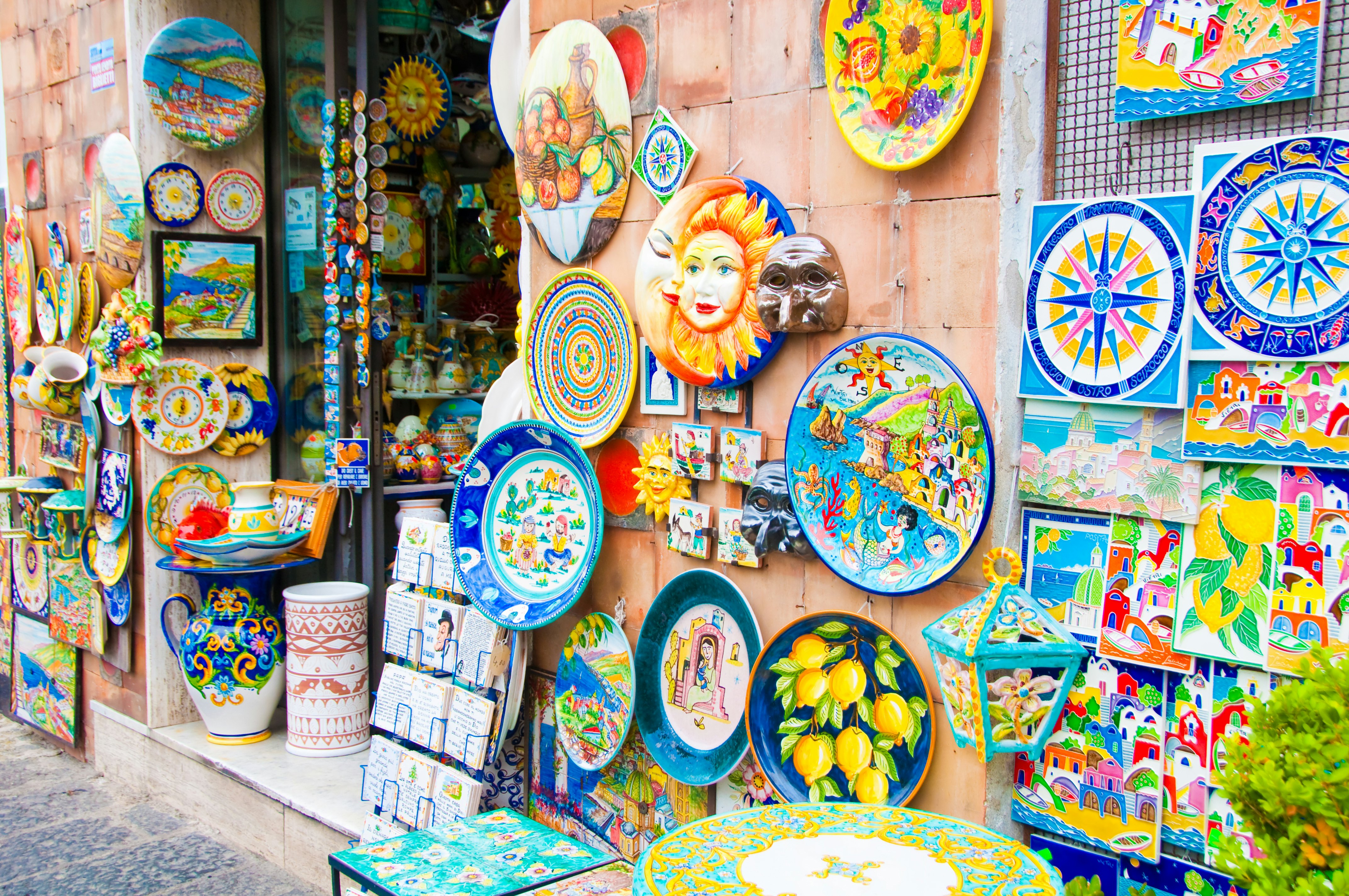
6. Vietri sul Mare
Best for ceramics
Vietri sul Mare has been a ceramics center since the Roman era. Today the coast's easternmost village is an open-air gallery, where ceramics line almost every surface and the San Giovanni Batista’s majolica tiled dome glints in the sunshine.
Around town you’ll find artisans hard at work crafting vases and tableware, but the best place to head is the Solimene Ceramics Factory with its Gaudi-esque tiled exterior. When you've crammed your suitcase full of handmade ceramics (check out the bargain seconds), head down to the Villa Comunale, with more Gaudi-style tiling and terraces overlooking the sea.
Planning tip: More sprawling Vietri makes for a less-crowded base than picture-perfect places such as Positano westwards along the coast.
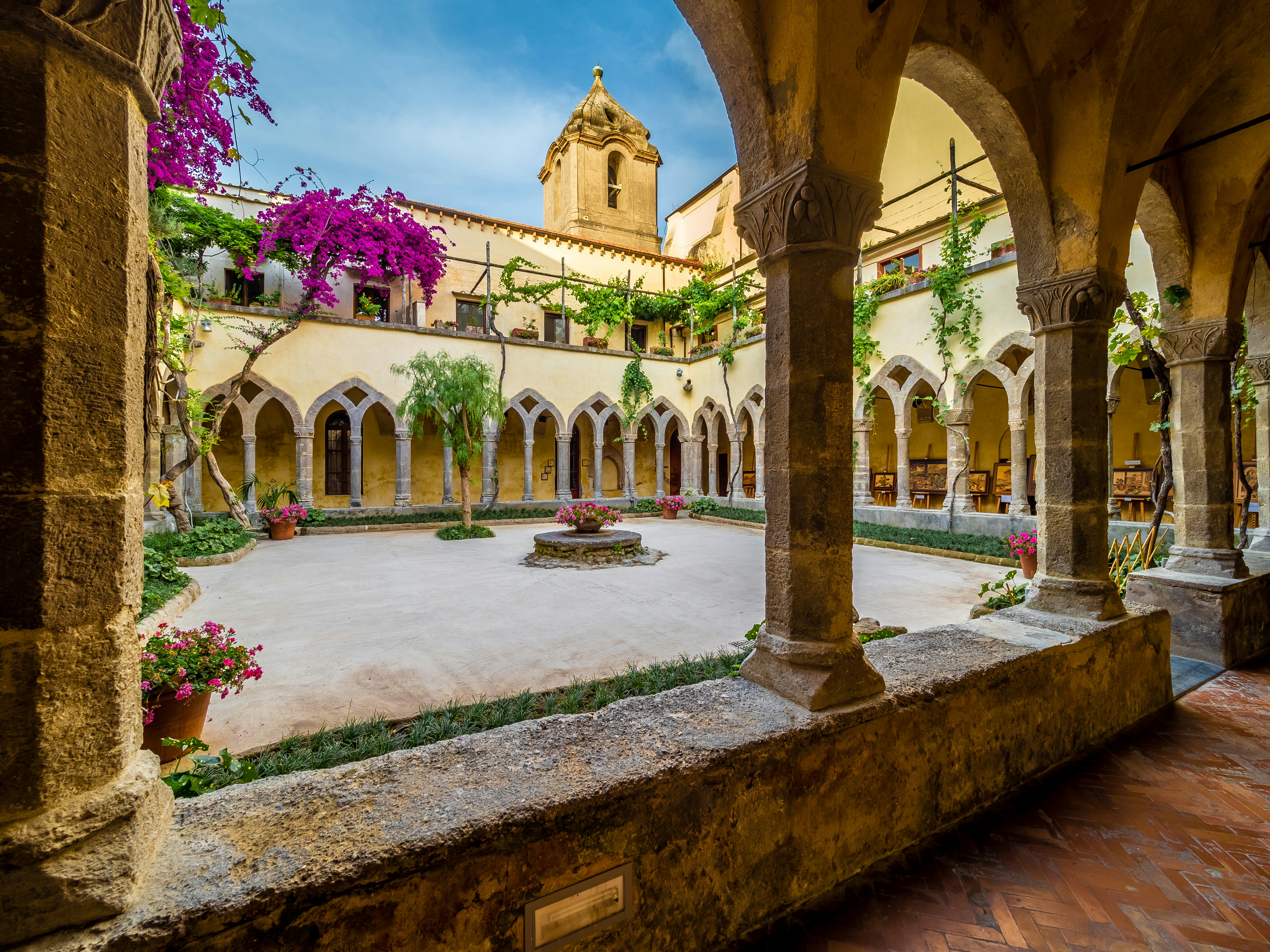
7. Sorrento
Best for artisans
Seaside Sorrento is on the Sorrento Peninsula and technically not part of the Amalfi Coast. However, at only 30 minutes west of Positano, it’s so close that it would be rude not to make a detour.
Its heart is Piazza Tasso, next to which is an ancient quarter full of artisanal shops; the town is famous for its marquetry furniture. Seek out treasure trove Gargiulo & Jannuzzi, with artisans at work. Stroll past grand villas and the Villa Comunale gardens overlooking the Gulf of Naples, then take a minute in the beautiful, shaded, colonnaded 14th-century Chiostro di San Francesco. Cap things off with an oceanfront dinner at Portamarina Seafood, with your toes almost in the sea.
Planning tip: Sorrento is the birthplace of limoncello, with lemon-yellow bottles almost everywhere you look. Skip anything mass-produced and head to gloriously central Giardini di Cataldo lemon grove, for an artisanal tipple.

8. Bagni Regina Giovanna
Best for a Roman bath
Bagni Regina Giovanna is a tiny gem of a beach, approached by a steep path, and 3.6km (2.2 miles) west of Sorrento. It’s overlooked by what was the beautifully located seaside escape of the Roman nobleman Pollio Felix. Some of the 1st-century villa's ruins are sunken and visible beneath the surface of the gin-clear water. Thrill-seekers dive off the villa's rooftop into the Gulf of Naples; a 46m (150ft) drop. Pure Pagan joy.
Planning tip: Take some appropriate shoes as the routes to both the beach and the ruins are narrow and uneven.

9. Baia di Ieranto
Best for secluded swims
Also on the Sorrento Peninsula, this dazzling, secret-feeling cliff beach - the name means Sacred Bay - is a 45-minute hike from the village of Nerano. The trek starts out gentle, but the last 15 minutes are more intense, leading you down a rocky slope to reach the hidden bay, with an amazing view of the faraglioni (rock towers) of Capri. This is another spot where Ulysses is believed to have resisted the sirens, mermaids who made music so beautiful that it would lure sailors to their death.
Planning tip: Bring food for a picnic as there’s no kiosks on this beach; water is essential.
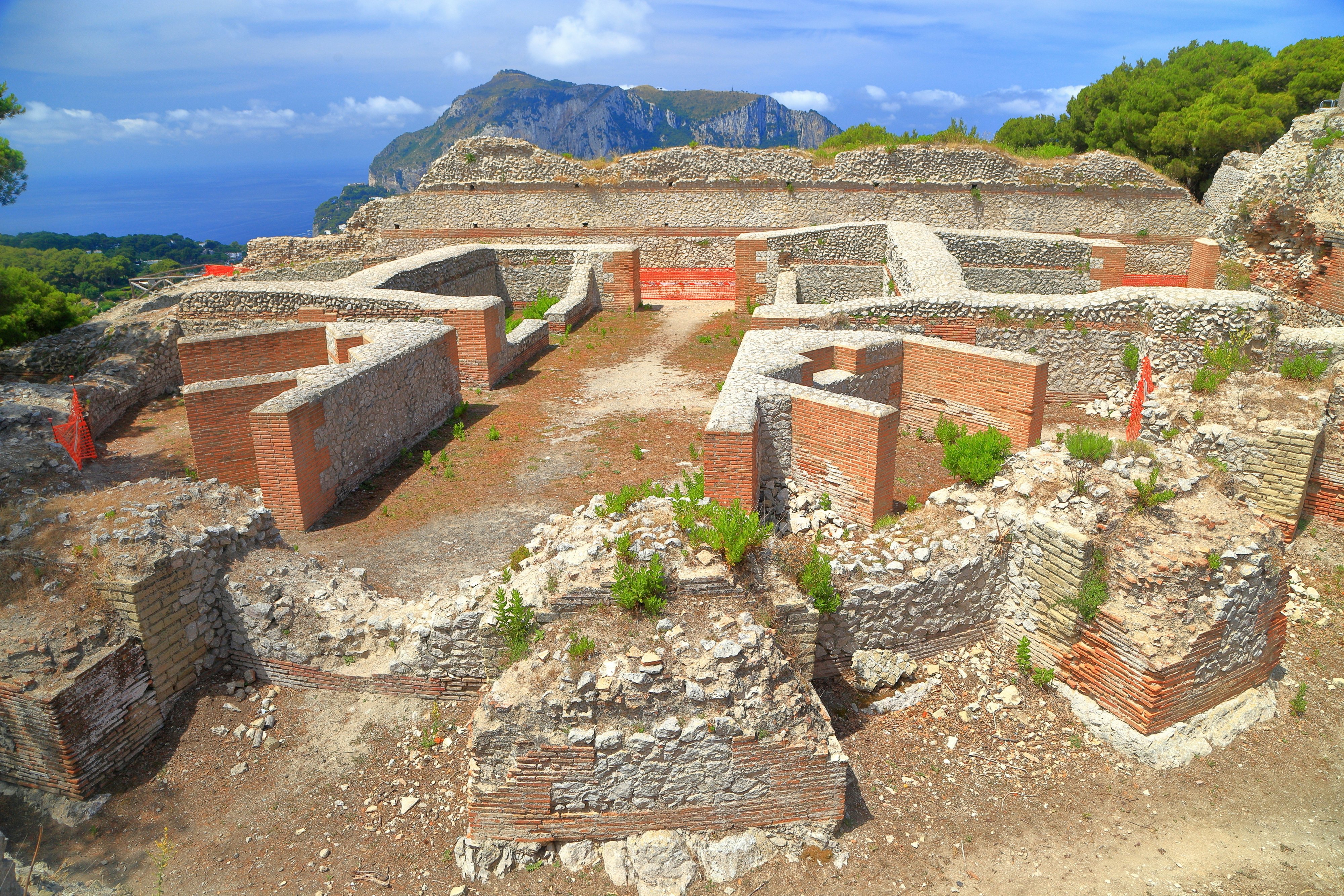
10. Capri
Best for la dolce vita (the sweet life)
Favored holiday escape of the notorious Emperor Tiberius, the beautiful island of Capri is easily accessed by boat from the Amalfi Coast, only a 25-minute trip from Sorrento. In summer there are crossings from Amalfi and Positano. The port of Marina Grande, where you arrive, is off-puttingly busy, as is Capri Town, but if you climb the streets away from the centre, you’ll soon escape the crowds. You can walk up to the ruins of Tiberius’ Villa Jovis from here, a steep haul to head-spinningly wonderful views. Another way to see Capri at its best is to hire a boat, with or without a skipper, and stop off at the island’s coves only accessible by boat. It only takes around an hour to circumnavigate the island.
Planning tip: Use Capri’s cooperative porter service, available at Marina Grande, to deliver your luggage to your accommodation, to ease your journey by funicular.















